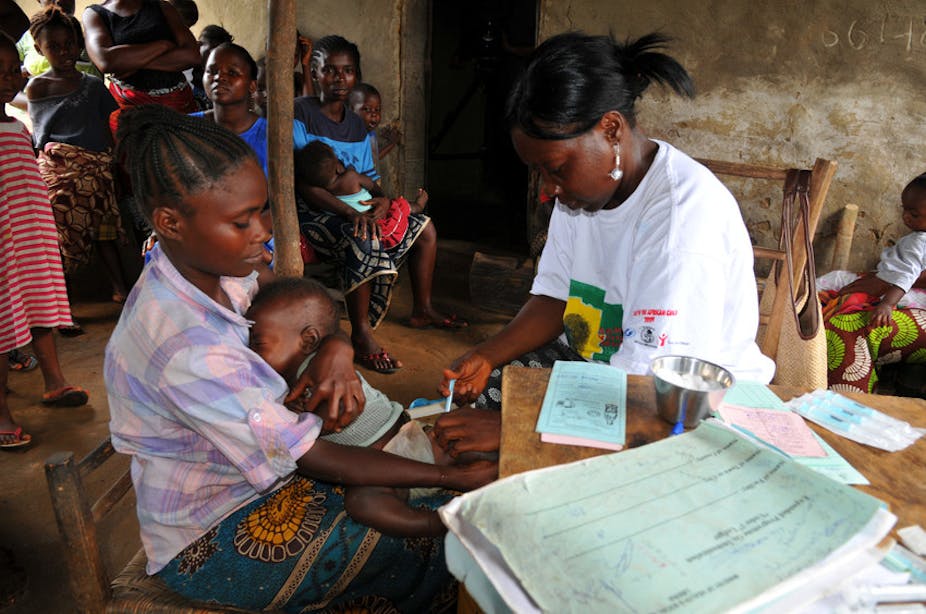We can end absolute, extreme poverty within 20 years, according to Geoffrey Lamb, president of global policy and advocacy at Bill & Melinda Gates Foundation. That means the number of people living on less than $1.25 a day will fall from a fifth of the world’s population to less than 5%.
In the Graeme Clark Oration delivered to an audience of 2,000 people last night at the Melbourne Convention Centre, Lamb outlined how we are winning the war against poverty. He underlined this with the fact that GDP growth in developing countries is outstripping the economic growth of OECD countries. And he said the world has witnessed “an unparalleled transformation”, with 700 million fewer people living in absolute poverty than 20 years ago.
According to Lamb people in extreme poverty go to sleep hungry or feeling insecure about their food for the next day. Their lives are precarious; if a wage earner gets ill, a whole family faces crisis. If there’s a measles epidemic, it can tip a whole community into crisis.
He demonstrated that while nearly two-thirds of child mortality is due to preventable infectious diseases, such as AIDS, pneumonia, diarrhoea, malaria and neonatal illnesses, this too hides a “dramatically good story”. Seven million fewer children die every year compared to 20 years ago.
How did this happen? Lamb attributes these changes to strong economic growth and great investments in prevention and treatment. He recounted the dramatic improvements in public health in poor countries. Polio has been virtually eradicated (reduced by 99% since 1988) and malaria cases have been reduced by half in 38 countries between 2000 and 2008.
The Global Alliance for Vaccines and Immunisations (GAVI Alliance) has supported the vaccination of 370 million children, averting five and a half million future deaths. He talked about the Global Fund for AIDS, Tuberculosis and Malaria, which despite much early scepticism (his own included, he admitted) has ensured four million people have started on life-saving anti-retroviral treatments for AIDS, 9.7 million have received tuberculosis treatment and 310 million insecticide impregnated bed nets for malaria prevention have been distributed.
Lamb is convinced that Australia, as a “forward thinking and progressive” democracy, has a critical role to play in global health – in the areas of finance, politics, science and research. As an economy that survived the financial crisis, he urged Australia to meet global targets for development assistance. As the host and leader of the G20 in 2014, he pointed to the potential that Australia has in setting the agenda for the meeting.
He explained that the vision of the Gates Foundation had been driven by the outrage felt by the “very highly focused” Bill Gates, knowing that poverty and distance block so many young children getting health services and vaccines. And that vaccines available cheaply in developed countries could take 10, or even 15 years to reach children in developing countries.
Two examples stand out in bringing the Gates’ business mindset and their “monied leadership” to global health. The first is the $1.5 billion invested in the GAVI Alliance, which has sped up the development of vaccines for the developing world and made them affordable by introducing initiatives such as the Advanced Market Commitment. This is a highly innovative (and initially very risky) approach where GAVI ensures a price and market (demand) for vaccines if manufacturers can guarantee supply.
The second is the $250 million they have invested over ten years in the Avahan AIDS prevention program. In 2002 Ashok Alexander, the lead partner for McKinseys in India at the time, was asked by Bill Gates to help stem the AIDS epidemic in India. The rapid mobilising and scaling up of HIV prevention services to female sex workers and drug users that followed has helped avert hundreds of thousands of HIV infections, and India now has one of the most effective AIDS programs in the world.
Lamb insisted that this kind of progress means it’s now possible to think of an effective end to absolute poverty (from a billion people to perhaps under 100 million) as long as economic growth through an open international economy ensures poor people are pulled into the mainstream and not marginalised. But he also said economic growth and higher incomes on their own do not resolve the precariousness and vulnerability facing poor people. Greater levels of access to prevention and treatment were also needed.

